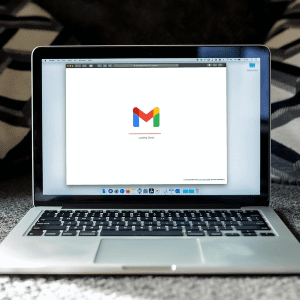 It’s difficult to think of an 18 month period that would have affected the tourism industry as drastically as the one we have all just lived through.
It’s difficult to think of an 18 month period that would have affected the tourism industry as drastically as the one we have all just lived through.
Without warning, the global marketplace that exists around providing experiences for people in the far reaches of this wonderful planet had not only the rug pulled out from under it, but also the doors locked, the flights grounded, and the tourists’ kept thousands of miles away.
If you’ve made it through all of that and avoided succumbing to Covid-19 in the process, well done! As your eyes now turn towards the future, it can be a daunting possibility. The idea of rebuilding not only your business but almost an entire industry from scratch feels like a mammoth task.
However, a touch of ingenuity here, and a bit of adaptation there, and sating the hunger that swathes of people have for traveling once more could be easier than you think.
A great way of getting the word out that “hotels are back!” in a world where word of mouth still feels like a barren resource is your digital presence. It’s undeniable that social media will play a huge part in the holidaying renaissance that (we hope) is to come, but it isn’t the be-all and end-all.
The email, comparatively simple compared to its flashy, younger social sibling could be the thing to unlock your burgeoning potential, and in this article, we’ll show you how to maximize its appeal.
What Is Click-Through Rate (CTR)?
A lot of the conversation around how to improve your fortunes when it comes to email incorporates something known as a click-through rate. Now, this may sound straightforward, unlike something to do with CRM and marketing automation, and it does indeed seem pretty intuitive. Nonetheless, it remains important to ensure that this is understood before we discuss tips on driving an increase for your business.
So a click-through rate refers to how successful (or not) your email campaign is in getting customers to “click-through” to the desired location. Whether that is a booking form or a website, you can relax safe in the knowledge that your page on TripAdvisor is less important.
The strategy around getting customers, prospective or otherwise, to engage with your email content is the thing. Below, we look at the best ways in which you can try to improve the outcome of your email campaign.
Timing
It can be tempting to look at the world of online advertising and believe that a lot of your success or failure is determined by luck. Certainly, stuff that gains traction on social media and becomes global in its virality, more often than not, is a case of being produced at the right time. With this being a reality, it can be hard to guarantee success with your digital campaigns.
We aren’t shooting for global domination here, though. We don’t need our emails to become the “meme of 2021”. So, when we discuss timing in this context, you can afford to be a little more secure in producing content that will strike a chord with your mailing list. Think of good timing here as being the difference between reliable sales management software and the overzealous hard sells that put off more customers than they bring in.
Showing people the right message at the right time is the crucial part of getting this right. Generic messaging, aimed at appealing to everyone whilst speaking to no one gets lost in the ether of modern internet discussions.
Look at the conversations that your target demographic is having. Try to find out their specific wants and needs for any upcoming holiday, whether that be classic aspects such as like location or more modern ideals like ecommerce automation, and be sure to include this more direct, specific messaging as part of your email campaign.
Uniqueness
Whilst having a unique message is the absolute ideal, this is going to be hard to achieve at a time when the industry around the world is clamoring, more so than ever, for attention. So, instead of focusing on a unique message, try to instead create a unique element to your messaging which remains up-to-date, regardless of when the customer opens the email.
The most obvious way to do this is to include live pricing. Not only is this one of the areas that customers care about most when choosing their hotel, but it is also the most practical use of newly-emerging automation. Trying to keep your online pricing updated manually, much like purely manual lead generating strategies, is something that even the largest chains will struggle with.
Accessibility
If you think about how we all exist online as people instead of as a business, this can also help in constructing an effective email campaign. Most people that exist with an online presence nowadays do so across various devices. From phones to tablets, laptops to PCs, almost every one of us will, at one time or another, own two or more different digital devices.
This provides an extra element to think about when it comes to creating your campaign. You may design the perfect email for a laptop screen, but when it comes to viewing the same email on a phone, the formatting could be all wrong. This is also something to think about if you ever delve into the world of app management.
Customer patience for ineffective cross-device digital content is at an all-time low, and nothing suggests this will change anytime soon. Managing email overload is something we’re all used to doing, but would rather not have to.
So, when creating your email campaign, be sure to check how it looks on a range of screen sizes. This allows you to appeal to as many recipients as possible, regardless of which device they’re using.
Visual Storytelling
The art of “show, don’t tell” storytelling is something often discussed in the world of filmmaking. It’s a phrase that refers to a way of telling a story without words and, instead, through visuals alone.
It’s often thought that this is a more effective way of getting a point across. With past research showing that approximately two-thirds of people are visual learners, it would seem to follow that the most effective way of delivering a message is with a memorable, appropriate visual. We don’t want to shock people for the sake of shocking them. Despite what you may otherwise have read, not all press is good press.
Avoid Repetition
At a time when the future of your business and the wider industry is less certain than ever before, it can be tempting to find something that works and just stick with it. After all, there will always be an element of risk with any change, and a risk that turns out to be a bad one could spell doom for your future prospects.
The problem with this perspective, however. It can stop you from amplifying your individuality as a business. If you keep hammering the same message without offering anything new to customers, pretty quickly the online customer experience weakens, and your audience will get bored. The disaster of fading into the background could become your new reality. So keep the messaging fresh, even if it’s just a simple word change or by swapping an image.
Be Proactive With Concerns
One of the mains aims of marketing is to amplify the attractiveness of your business. The most efficient and alluring way in which to do this is to focus only on the positives. People, after all, want to hear about what you will offer them, rather than what you won’t
However, we’re now dealing with a prospective customer base that’s more wary and protective over their money than in pre-pandemic conditions. Whilst this particular slice of the demographic may all want a holiday more than in pre-March 2020, it isn’t going to be as easy getting them onside as with previous promotions.
There is a way to combat this more wary clientele, and that is by offering proactive customer service, even in your marketing material – explain the boring minutiae of your Covid policy.
Address a couple of the slight shortcomings or inconveniences which may arise during their stay. In doing this, you relay the notion, without having to say it, that you’re offering a real proposition and not something which is too good to be true.
This has the added bonus of setting guest expectations at an appropriate level from the get-go, making them more likely to be pleasantly surprised by their eventual stay, and less likely to be disappointed.
Conclusion
In these most uncertain times, it is more difficult than ever to be able to say with complete confidence what will work and what won’t when it comes to marketing campaigns. Email is just one arm of the digital toolbox you have at your disposal and, as shown above, getting it right is a bit of a tightrope walk.
Following the above advice shouldn’t see you too wide of the mark, though. If you create your next campaign with these tips in mind, your fortunes should change for the better.

















